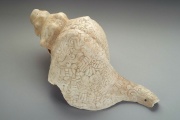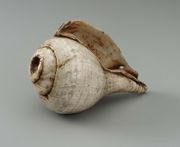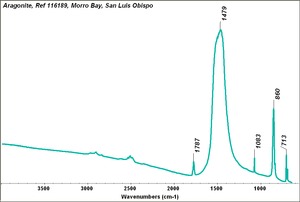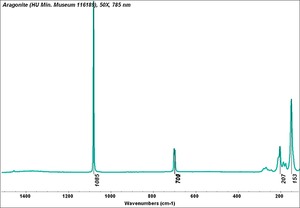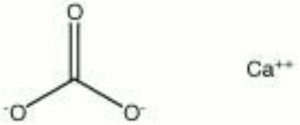Difference between revisions of "Seashell"
Jump to navigation
Jump to search
| (3 intermediate revisions by the same user not shown) | |||
| Line 2: | Line 2: | ||
== Description == | == Description == | ||
| − | A hard outer covering of a mollusk. Seashells are composed primarily of calcium carbonate ([[aragonite]]) bound with chitin. Some seashells, such as abalone, | + | A hard outer covering of a mollusk. Seashells are composed primarily of calcium carbonate ([[aragonite]]) bound with chitin. Some seashells, such as [[abalone]], [[oyster shell|Pearl oyster]] and mussel, have a hard iridescent inner layer. The iridescence is caused by the interference of light waves reflected between the thin overlapping layers. Seashells are soft and easily cut or carved. They have been used for beads, amulets and decoration since ancient times in both Eastern and Western cultures. |
| − | + | [[File:Shell trumpet.jpg|thumb|Shell trumpet<br>MFA# 17.2170]] | |
== Synonyms and Related Terms == | == Synonyms and Related Terms == | ||
| − | |||
sea shell; nacre (Fr.); oyster shells; concha marinha (port.); | sea shell; nacre (Fr.); oyster shells; concha marinha (port.); | ||
[[[SliderGallery rightalign|Aragonite 2.TIF~FTIR (MFA)|Aragonite (HU Min. Museum 116189), 50X, 785 nm copy.tif~Raman (MFA)|aragonite.jpg~Chemical structure]]] | [[[SliderGallery rightalign|Aragonite 2.TIF~FTIR (MFA)|Aragonite (HU Min. Museum 116189), 50X, 785 nm copy.tif~Raman (MFA)|aragonite.jpg~Chemical structure]]] | ||
| − | |||
== Risks == | == Risks == | ||
* No significant hazards. | * No significant hazards. | ||
| Line 19: | Line 17: | ||
* Streak = white | * Streak = white | ||
* Fluorescence = variable | * Fluorescence = variable | ||
| − | * Birefringence = strong (0.155) showing interference colors | + | * Birefringence = strong (0.155) showing interference colors (for mollusk shells) |
* Straight extinction | * Straight extinction | ||
Revision as of 13:05, 24 January 2023
Description
A hard outer covering of a mollusk. Seashells are composed primarily of calcium carbonate (Aragonite) bound with chitin. Some seashells, such as Abalone, Pearl oyster and mussel, have a hard iridescent inner layer. The iridescence is caused by the interference of light waves reflected between the thin overlapping layers. Seashells are soft and easily cut or carved. They have been used for beads, amulets and decoration since ancient times in both Eastern and Western cultures.
Synonyms and Related Terms
sea shell; nacre (Fr.); oyster shells; concha marinha (port.);
Risks
- No significant hazards.
- ThermoFisher: SDS
Physical and Chemical Properties
- Reacts with acids to evolve carbon dioxide.
- Aragonite is harder and denser than calcite
- Fracture = uneven to splinter
- Luster = greasy or pearly
- Streak = white
- Fluorescence = variable
- Birefringence = strong (0.155) showing interference colors (for mollusk shells)
- Straight extinction
| Mohs Hardness | 3.5 - 4.0 |
|---|---|
| Density | 2.93-2.95 g/ml |
| Refractive Index | 1.530 - 1.686 |
Resources and Citations
- Gem Identification Lab Manual, Gemological Institute of America, 2016.
- Wikipedia: Seashell Accessed Dec 2022.
- Richard S. Lewis, Hawley's Condensed Chemical Dictionary, Van Nostrand Reinhold, New York, 10th ed., 1993
- Oppi Untracht, Jewelry Concepts and Technology, Doubleday & Co., Inc., New York City, 1985
- Jack Odgen, Jewellery of the Ancient World, Rizzoli International Publications Inc., New York City, 1982
- A.Lucas, J.R.Harris, Ancient Egyptian Materials and Industries, Edward Arnold Publishers Ltd., London, 4th edition, 1962
- The American Heritage Dictionary or Encarta, via Microsoft Bookshelf 98, Microsoft Corp., 1998
